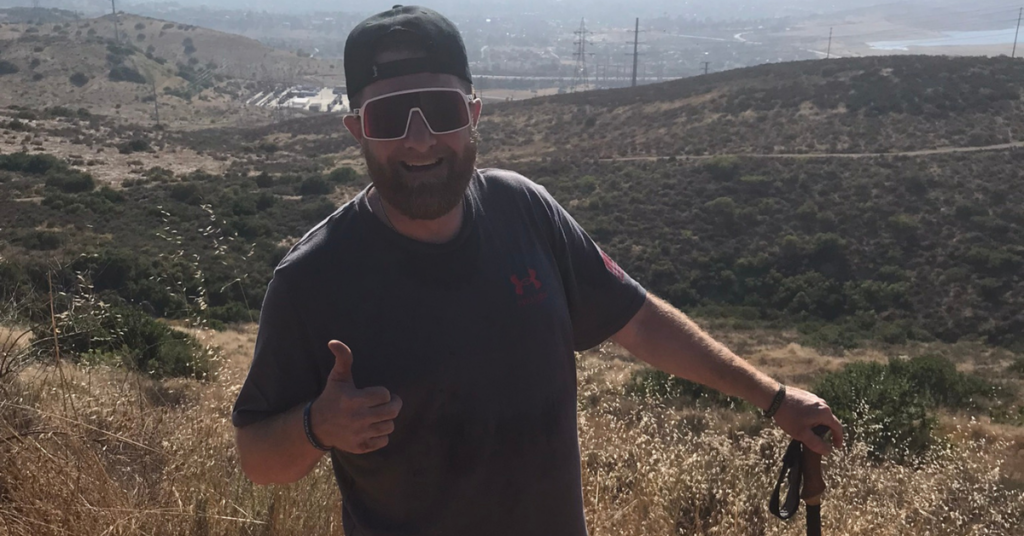My name is Tom Lawson and I am 46 years old, married with three children and a dog. I was diagnosed with Cerebellar Ataxia six years ago. Being diagnosed with a chronic auto immune disease was unsettling, no doubt. It’s sobering. It’s terrifying. It is a reminder of my fragility and mortality.
But, in a weird way, it was a relief as well. I finally had an answer to my instability and why I was always off balance. For years things seemed to be getting worse and I couldn’t understand it. Others could see it in me for a long time before I realized it, but it was a slow and progressive decline.
For years, I went to many different doctors to explore and try to see what was wrong with me. CT scans, ENTs, neurologists. They had no idea until about the third neurologist I saw did some pin tests on my legs and feet and I could barely feel a thing. He explained my nerves were dying (neuropathy) and that my proprioception was all off – my brain didn’t seem to know where my legs were which led to this constant searching for the ground and a gait that resembled someone who had been drinking. He had a suspicion and referred me to the Johns Hopkins Ataxia Center where I saw Liana Rosenthal and sure enough I had Ataxia. I had never heard of it, but it all started to make a lot of sense.
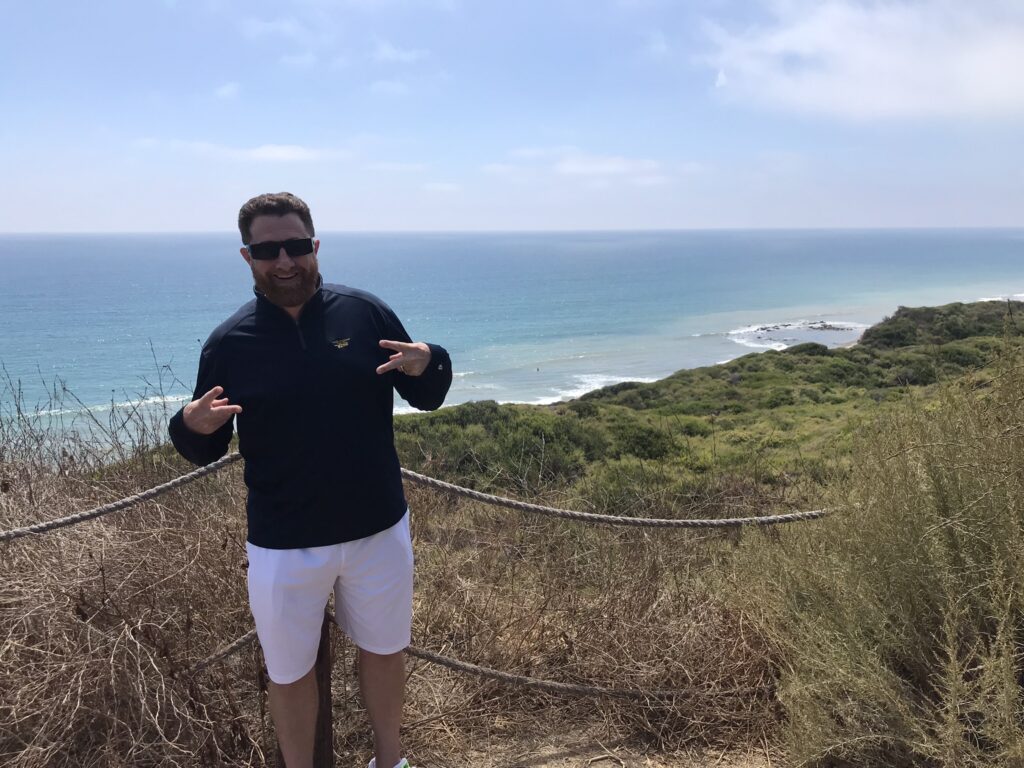
For the first time in a long time, things added up. My cerebellum isn’t working properly. My brain isn’t communicating properly with my legs. It’s not my fault. I am not doing anything wrong, or more importantly, I am not imagining this in anyway. As I learned more from Dr. Rosenthal about what I had wrong with me, I learned that this is a progressive disease and there is really no way to reverse the damage it’s done already – and more importantly no way to stop the progression from making things worse.
That was unquestionably a difficult pill to swallow – coming to terms with the thought that I’d be with a cane or in a wheelchair one day. But, as hard as that was, it did provide important clarity for things that had always seemed to be present.
People I know from high school say they could tell I “walked a little funny” as early as back then. A good friend of mine used to say I would “make lefts” out of nowhere while walking. In my early 30s, the mother of my ex-fiancée said she thought I had hip dysplasia. Another one of my best friend’s dads would say (at football tailgates in college and just after) that whether I had 2 or 10 alcoholic drinks, I would walk exactly the same.
I could never understand why I was always a little off while on my feet. 15+ years ago I can remember walking the dog and being focused on not stepping off the sidewalk – simply staying on the concrete – and many times I could not. The fact that it was difficult to stay on a 3-foot wide strip was alarming and a bit embarrassing.
Around that same time, I went on a trip to Ireland with my father and brothers. We went and visited the Carrick-a-Rede rope bridge in Northern Ireland, a famously tall and adventurous rope bridge that spans about 60 feet from the mainland to a small island about 90 feet above the ocean below. It’s challenging for “normal” people. This was long before I was diagnosed with Ataxia, but I can remember thinking that it really shouldn’t have been as difficult as it was for me. It was another caution flag that something was happening; something was wrong with me.
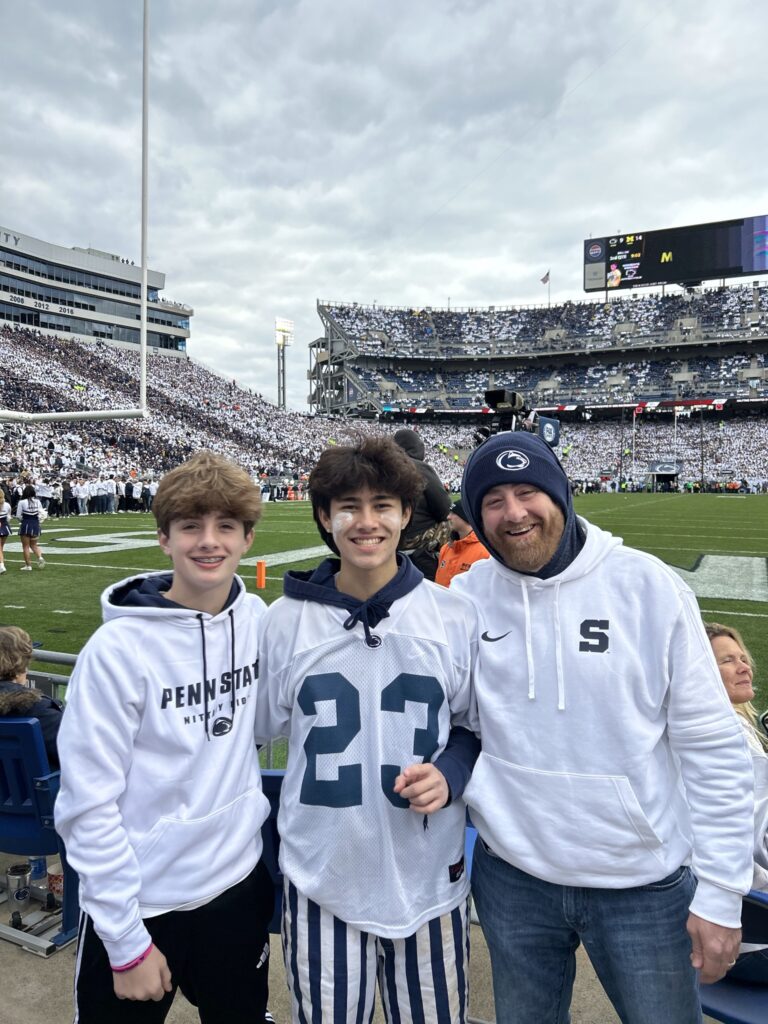
Since those early warning signs, things only got worse. There were times when I was denied entry into bars because I was thought to be too drunk already – even though I had not had a single drink. There was a time when I went to pick up my son at after school daycare and the teacher didn’t want to release him to me because she thought I was intoxicated or on some kind of drugs. It was only after I showed her the card that Dr. Rosenthal provided me that she understood and apologized profusely.
Unfortunately, the embarrassment isn’t limited to those instances. It’s only become more of a focus of mine. Every time I walk into a room, into an airport, into a business meeting, into a restaurant, a parent-teacher conference, a grocery store, or pretty much into any public venue I feel incredibly self-conscience and feel that every set of eyes in the room is looking at me. Every step I take. Judging me and wondering what’s wrong with me. It’s horrible.
It’s gotten so prevalent and such a constant focus of mine, that much like a good PR person, I try to get out in front of the story. I offer it up ahead of time and try to explain that I am not in fact inebriated, but rather I have a physical disability. And most people, if not all, have never even heard of Ataxia.
But yet, it’s not a simple mental hurdle to get over. I grew up playing all kinds of sports – soccer, baseball, tennis, basketball – but can no longer play any of them. Recently, on a trip to southern California I decided to test myself with a “moderate” hike up Mount Miguel with my brother. The hike is “only” 1.5 miles to the top and overlooks all of San Diego and the bay and ocean. It’s a beautiful thing. As we started the hike, I felt good and saw people of different ages and levels of fitness having little problems. But the trail, uncertain footing, and incline were absolutely hellish for me. It was a snail’s pace, and after about 45 minutes we had only gone about .5 miles. Late in the day, and utterly exhausted and dejected, we turned back and went back down. I share this humbling story because it was the first time in years that I truly pushed myself physically like that – and it was a loud reminder of what my Ataxia has done to me.
I have been given different PT regiments that are supposed to help me. In full transparency, I have not truly given them a true chance. I am fully aware that, as a progressive disease, this will only continue to get worse over my life and that I will likely end up without any use of my legs. I know that my future involves a cane or wheelchair, and I am ok with that. But, more than the physical aspect, it’s the mental part that is so difficult.
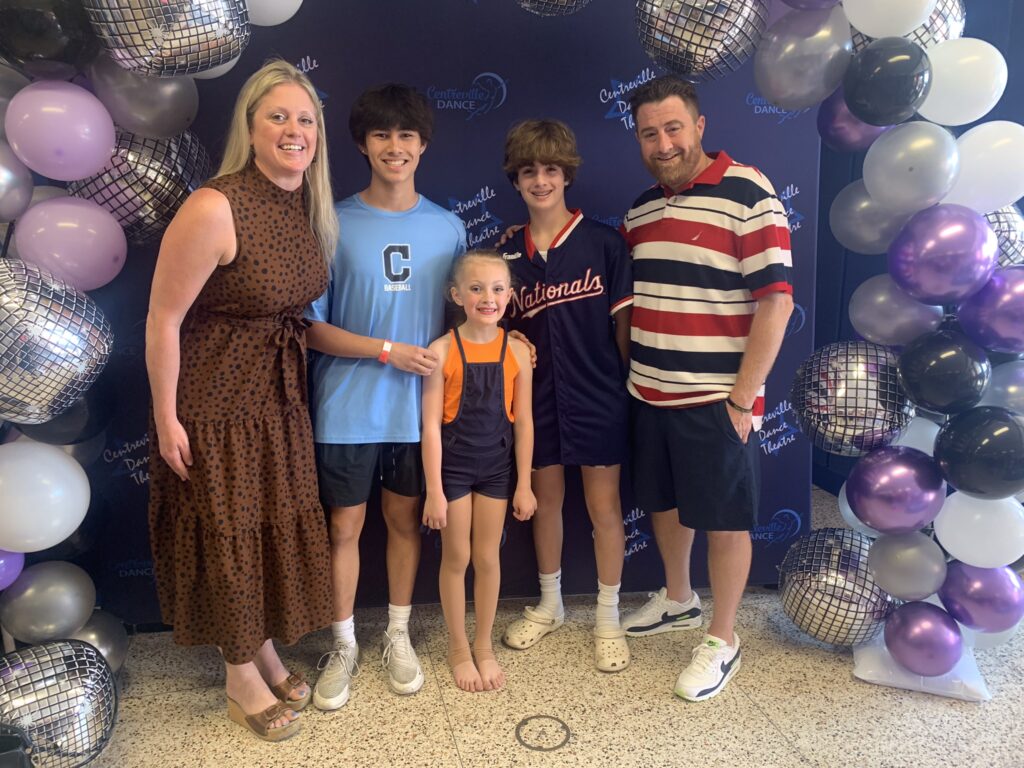
It’s the realization of how it affects my family, especially my mother, wife and kids. Needing their help when carrying things like the laundry or groceries, or navigating steps, or tough walks. It’s those areas where it is the most present – when it is highlighted the most. Knowing that, as things continue to progress, I will need their help much more in the future. That we may need to move from our family home, or at least modify it somehow so that the steps don’t become a full barrier. It’s the fear that I won’t be able to walk my daughter down the aisle at her wedding one day.
In the grand scheme of things, it’s not the worst thing in the world to have. Many people have it much worse than I do. No doubt about it. I do not claim to have been dealt a bad hand, or hope to be a sympathetic figure in any way. On the spectrum of disabilities, it’s not a terminal illness, or completely debilitating. I have a successful career and continue to modify things to accommodate my needs and desires. With things such as ADA seating and disabled parking, I can enjoy college and pro sporting events like I have my entire life.
As so many times in my life, my father helped put it all in perspective for me: He, a fully disabled military veteran, has Leukemia and Parkinson’s, so he is dealing with a great deal. After being diagnosed and feeling sorry for myself, he said: “It could be much worse. You could have terminal brain cancer.” And he is so right. Perspective is so important.
I offer all this up as a way to get some of it off my chest. I think it is absolutely terrific all the work that NAF is doing and continues to do. Recently I reached out to Executive Director Andrew Rosen and Communications Director Stephanie Lucas and had separate conversations with both. They are both tremendously fantastic individuals – both professionally and personally. They offered me the chance to tell my story, which I took them up on. What began as a short bio turned into a therapeutic 1500 words. My story is not over and with all the continued hard work of NAF, others in my shoes can also find help and support to not go through this alone.
What is Your Ataxia Story?
As an organization dedicated to improving the lives of those affected by Ataxia, we believe that each story has the power to inspire, connect, and empower others. We invite you to share your personal Ataxia journey with us.
Are you here to read the personal stories, but haven’t yet joined as a member? We hope you find comfort in reading about the experiences of others on their Ataxia journey. We invite you to join as a member to receive a new member story each month. It’s free, and you’ll be kept up-to-date on the latest developments in the Ataxia community.
Recent Member Stories
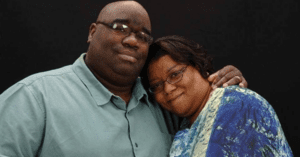
LaTashia Allen
I have Spinocerebellar Ataxia type 2. Also known as SCA2. I was 47 years old when I was diagnosed. I already knew that I had Read More…
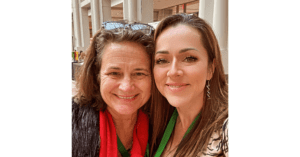

Susan Harris
Chapter 1: In the beginning I wasn’t always this way. Growing up the daughter of a military man I can honestly say red, white and Read More…


Anna Santoro
My name is Anna Santoro and I am the stay-at-home mom of three boys and the primary caretaker to my mom, who has Ataxia type Read More…


Korkut Alp
Note: Korkut submitted his story in Turkish. Google Translate was used to translate his submission. The translation may not be accurate. We will include his Read More…
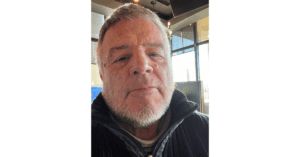

David Beavan
When I was a teenager I remember my father used to weave a little when he walked. We played a lot of golf, and he Read More…
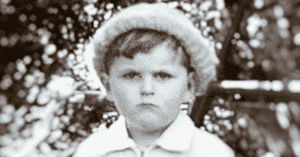

Jerry’s Story
I’m actually reluctant to tell my story as it’s far from positive. Currently my tremors are more disabling than my balance issues, which are dreadful. Read More…


